Kaiserschmarrn
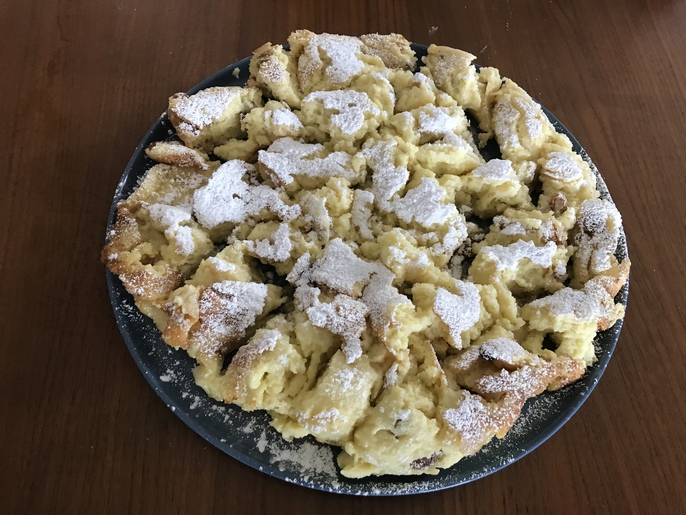
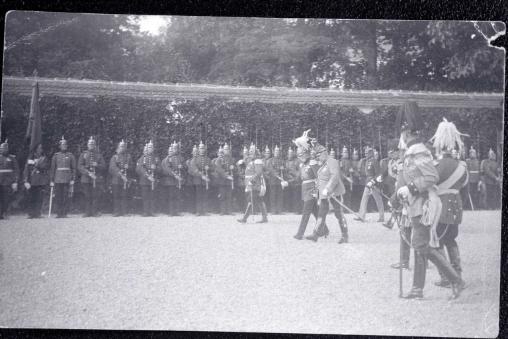
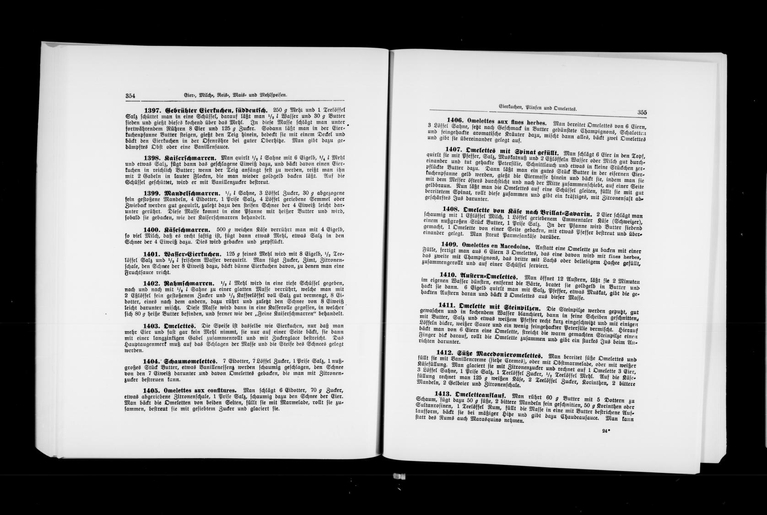
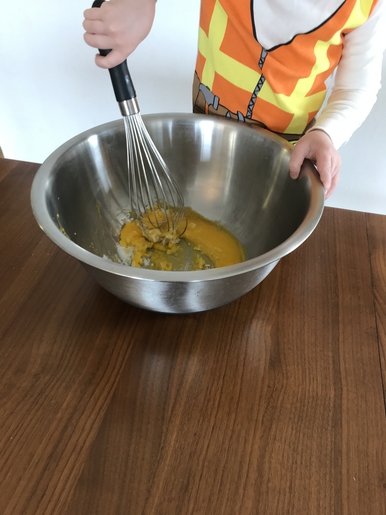
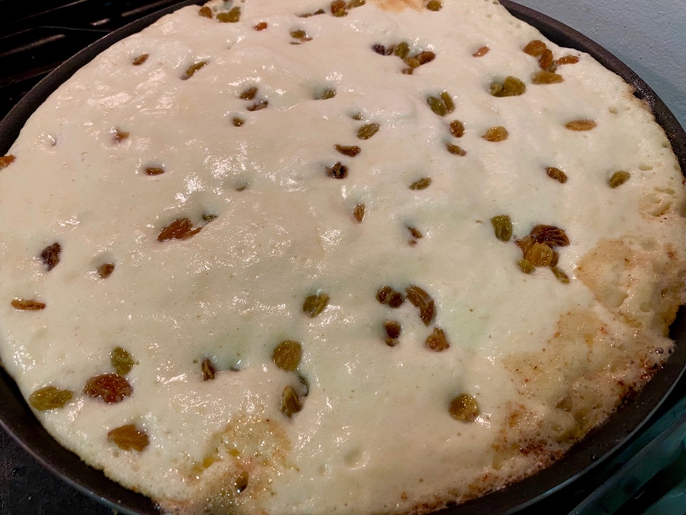
A common dish found in published cookbooks and manuscript recipes from Jewish Vienna is Kaiserschmarrn, a kind of scrambled pancake with raisins. This Viennese recipe spread throughout the German-speaking world, and eventually appeared in cookbooks across German-speaking Europe.
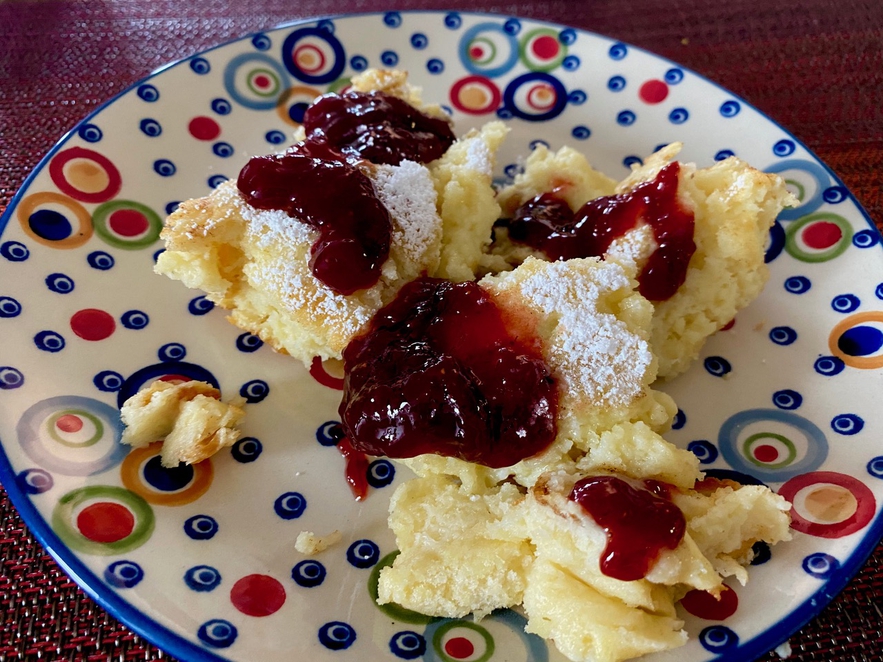
Like most recipes and cookbooks in our collection, Kaiserschmarrn does not stand out as a traditional Jewish dish. As an assimilated population, the Jewish cook and baker in Germany or Austria generally made the same recipes as those non-Jews around them, with modifications for those keeping Kosher kitchens.
There are many legends on the origins of Kaiserschmarrn. Wikipedia provides the most fanciful legend surrounding its creation by the Austro-Hungarian monarchy in the days of the Empire.
It is generally agreed that the dish was first prepared for the Austrian Emperor Franz Joseph I (1830–1916). There are several stories. One apocryphal story involves the Emperor and his wife, Elisabeth of Bavaria, of the House of Wittelsbach. Obsessed with maintaining a minimal waistline, the Empress Elisabeth directed the royal chef to prepare only light desserts for her, much to the consternation and annoyance of her notoriously austere husband. Upon being presented with the chef’s confection, she found it too rich and refused to eat it. The exasperated Franz Joseph quipped, “Now let me see what ‘Schmarrn’ our chef has cooked up”. It apparently met his approval as he finished his and even his wife’s serving. Thereafter, the dessert was called Kaiserschmarrn across the Empire.
According to this lore, Kaiserschmarrn means something along the lines of “emperor’s mess.”
German Wikipedia provides two additional explanations on the creation of Kaiserschmarrn. The first legend says that Emperor Franz Joseph I was offered a Holzfällerschmarrn (a “wood cutter Schmarrn”) while hunting in the Salzkammergut resort area. In his honor, it was improved with milk, raisins and eggs. So the traditional Holzfällerschmarrn became the fine Kaiserschmarrn.
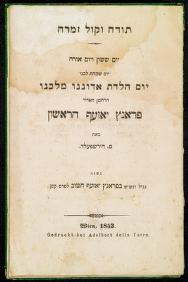
Another legend says that the Emperor Franz Joseph I liked to have pastries for dessert, especially Palatschinken (an Austrian version of the French crêpe). If the King’s chef prepared them wrong, for instance if they were too thick or broken, they were served to the staff, because the Emperor would not eat them. (In this case Kaiserschmarrn would mean, “Nonsense to serve this to the Emperor.”)
Franz Joseph's popularity among the Jewish community makes Kaiserschmarrn a good recipe for a German-Jewish food blog. The lives of Jews were considered to have improved under Franz Joseph I's rule, in part because he made Jews full citizens. Franz Josef I was so popular that the synagogues were full on services held in honor of his birthday.
An Austrian co-worker provided the following recipe when a friend and I decided to try our hand at Kaiserschmarrn. The secret to delicious Kaiserschmarrn, according to this former Vienna resident: “Beat the egg whites separately, so they are really fluffy.”
The recipe is as follows:
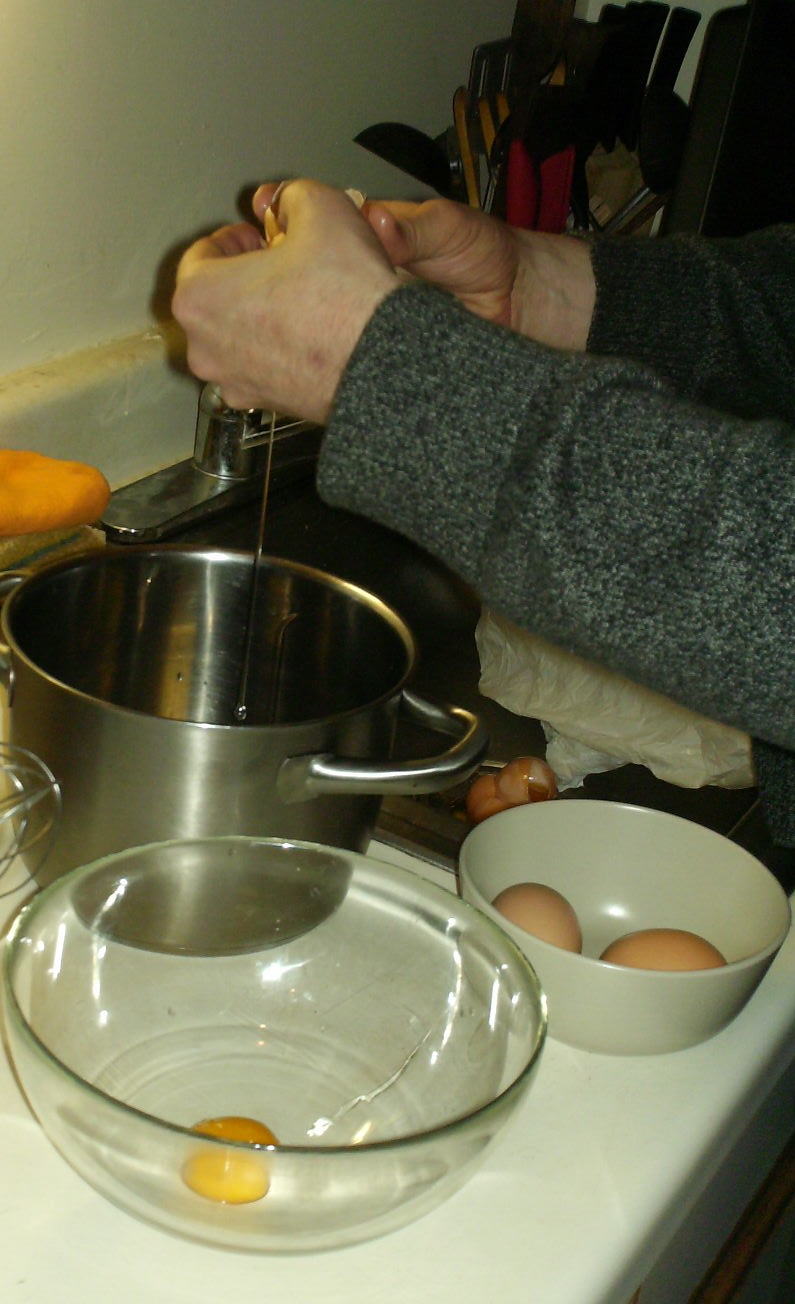
Ingredients:
• 1 cup flour
• 1 cup milk
• 1 tbsp sugar
• 1 tsp salt
• 4 eggs, separated
• Rum and raisins are optional (an Austrian friend said they always use Grand Marnier instead of rum)
Directions:
1. Separate egg yolks from whites. Be sure no yolk is in the whites.
2. Mix together flour, sugar, salt, yolks and milk in a large bowl.
3. Beat the whites in a glass or metal bowl until they hold medium white peaks.
4. Take a bit of the whites (maybe 25% – 35%) and mix into the flour, sugar, salt, yolk, and milk mixture to lighten it up.
5. Fold in the remaining whites. Try not to lose the fluffiness. It doesn’t have to be perfectly mixed.
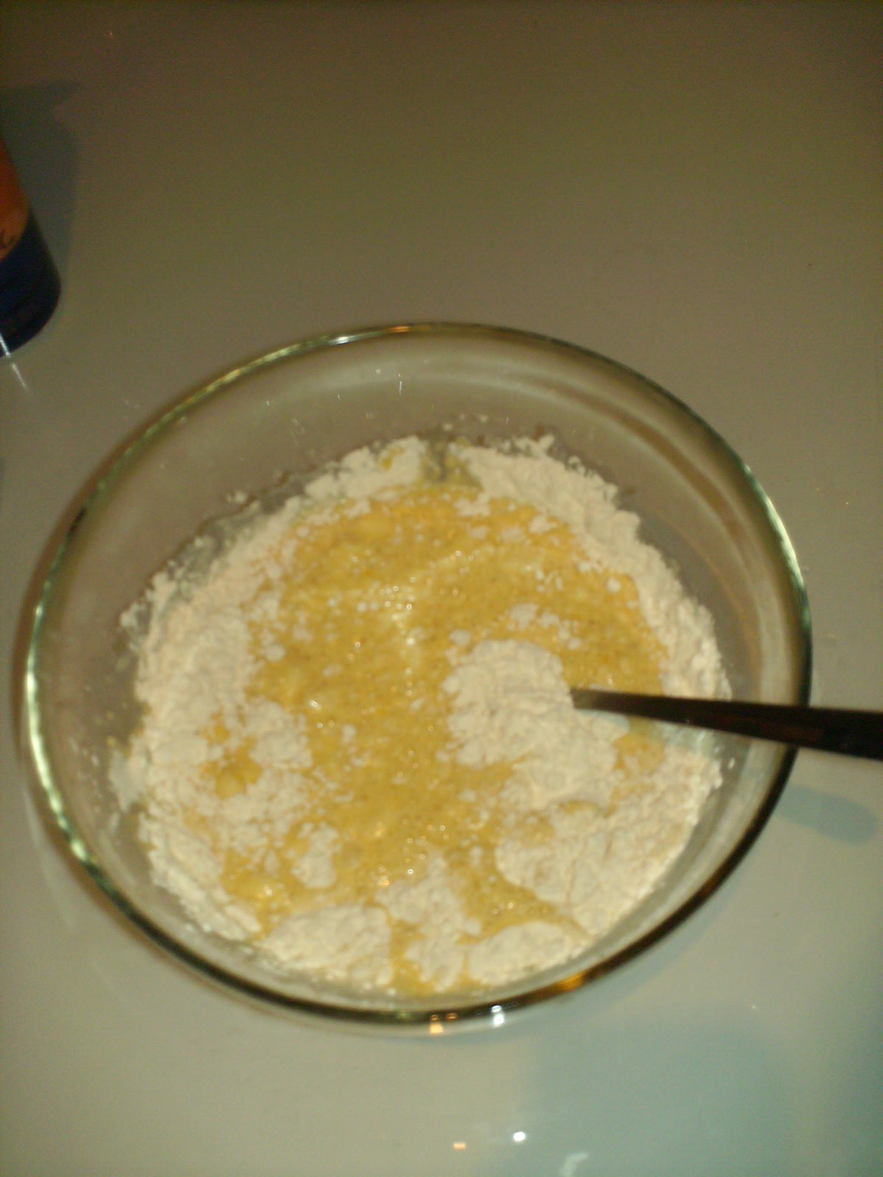
6. Melt the butter in a large saucepan. If you want to, add the raisins and rum (or Grand Marnier) and sautee for a few minutes.
7. Add the batter to the saucepan.
8. When it seems like the mixture is fairly solid, cut into quarters and flip over the quarters.
9. After a minute or two, cut up the Kaiserschmarrn!
10. Plate it and garnish it to your liking. Traditionally, Kaiserschmarrn is topped with powdered sugar and marmalade (most often plum flavored). My coworker, whose recipe we used, says, “I like it with a squeeze of lemon and maple syrup.
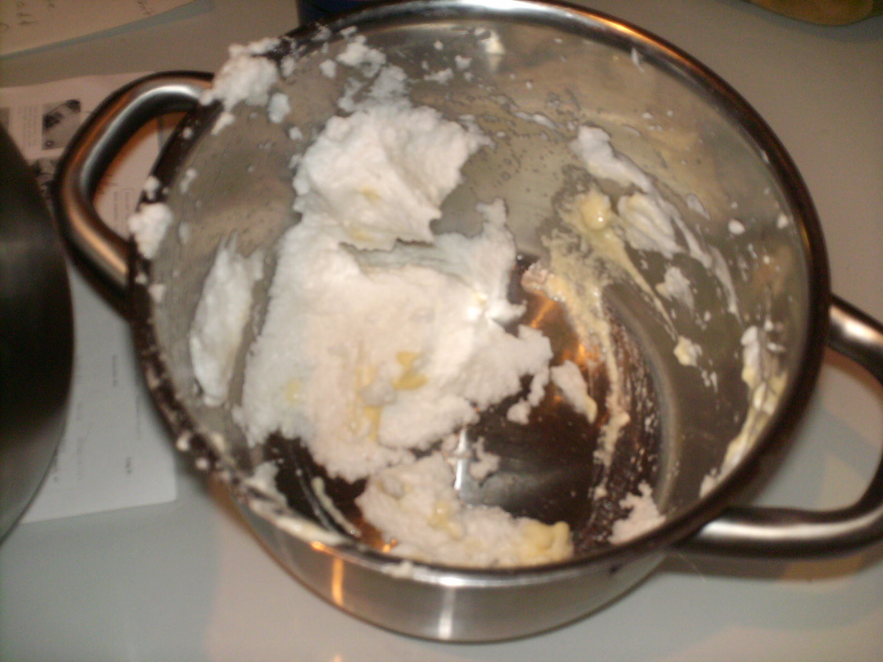
We were told separating the egg yolk from the whites was the most important part of the recipe. Another person told me that whatever I did, I was not to let any of the egg yolk get into the whites. I’m not the best egg separator, so lost a few eggs during the process!
I have to confess that I think next time I may add one extra egg and a bit more milk. The Kaiserschmarrn we made according to the recipe above was very good, but I personally think it could stand to be a bit more moist.
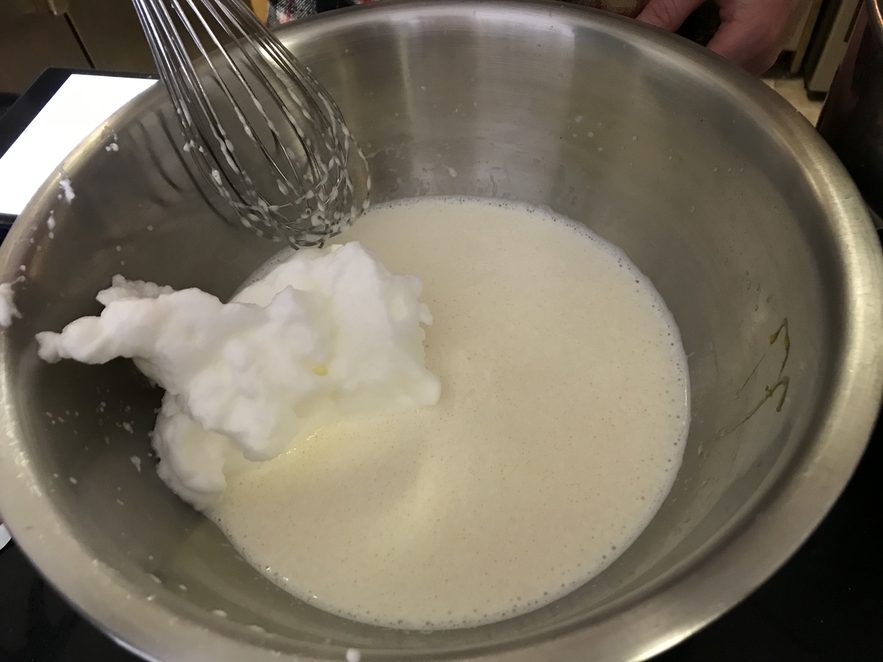
We gently folded the beaten egg whites into the batter. We used a folding motion to try not to flatten the whipped egg whites in the process. The resulting mixture is foamy and thick.
We prepared the pan that will contain the Kaiserschmarrn: In a saucepan we heat up a mixture of rum, raisins, and butter. If I was to do it over I would add a bit more butter and use Grand Marnier instead of rum, as my friend from Vienna suggested.
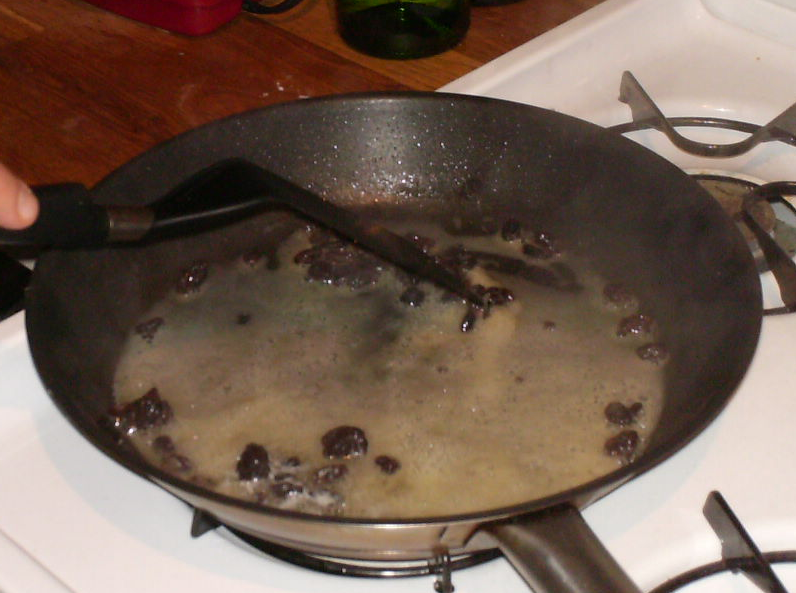
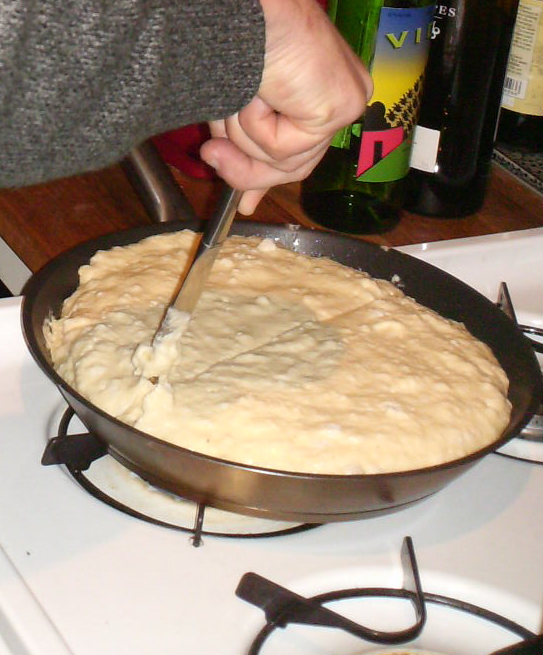
I prepared to divide the Kaiserschmarrn into four pieces and flip them to cook the other side.
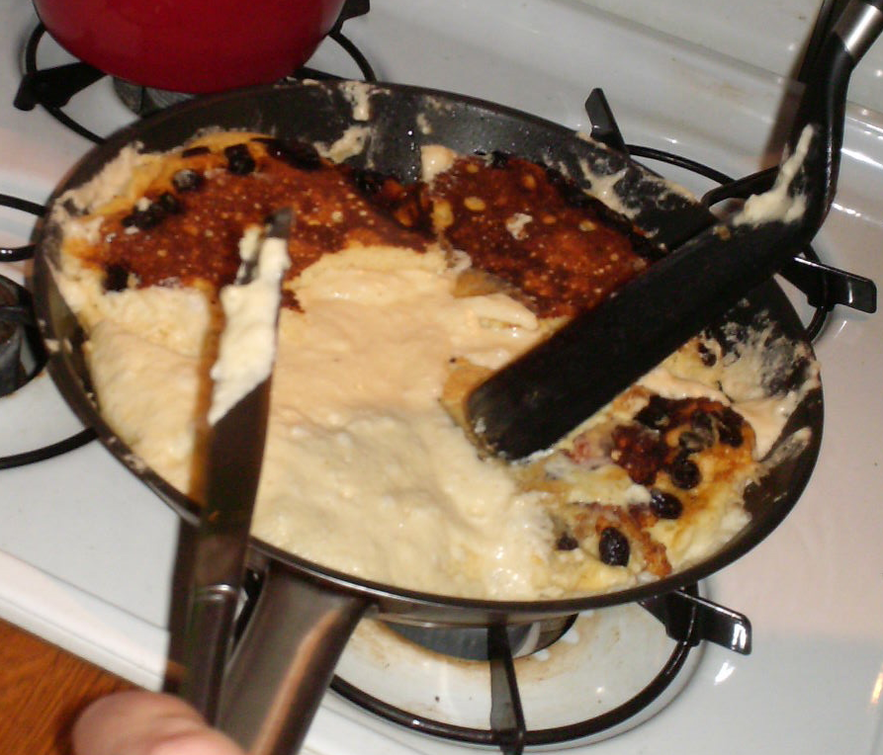
The flipping turned into kind of a gooey-mess, but don’t let this scare you! Kaiserschmarrn is essentially a giant pancake which takes up the whole pan and the middle doesn’t get completely hard. If it did, the bottom would burn. Once it is flipped once, it can cook more slowly.
Once cooked, we shredded the pancake into smaller pieces. While it was a shame to see the pancake be ripped up, I didn't see how the inside would get done if it was kept whole. My friend told me he managed to keep his whole; apparently practice makes perfect.
The finished product was topped with the traditional fixings of powdered sugar and plum compote, but you can use what you wish. I made sure to find a nice plate to serve it on, befitting the Emperor of Austria!
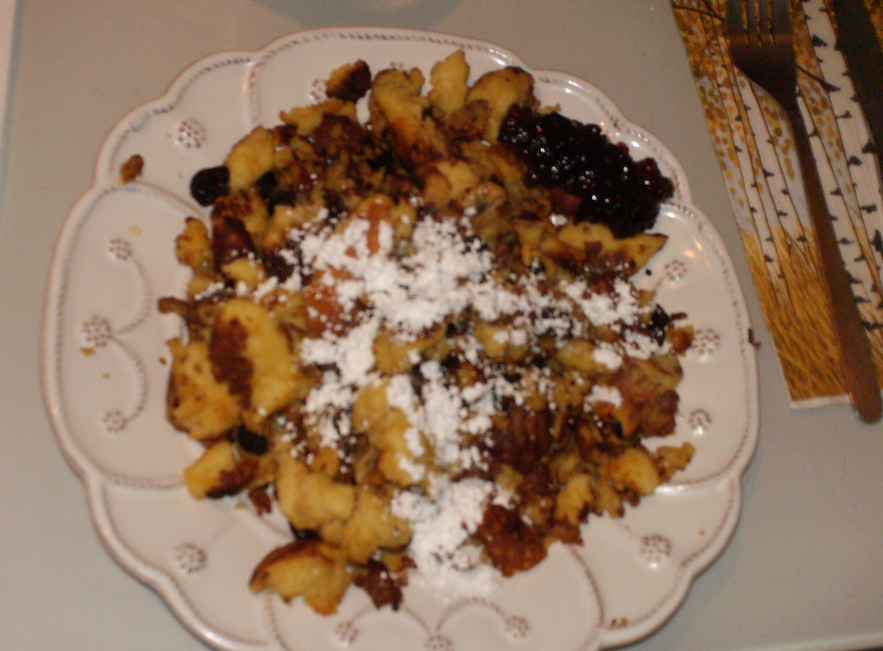
It was quite good and overall we were pleased with the results. I spoke to my fellow-cook, and she pointed out that we did not make a sauce for it. Traditionally, the Kaiserschmarrn is often accompanied by a vanilla flavored sauce, and if we had made that and poured it over the dish it would certainly have been more moist. Ice cream would have been a phenomenal topping.
I can’t imagine how the Empress Elisabeth thought this dish would help her to lose weight. What had she been eating before this “diet dish!?” Today, this dish most definitely is not considered a “light dessert” by any means. I would definitely make Kaiserschmarrn again; in fact, writing this piece has made me crave some. In a world of no carbohydrate diets and thin waistlines, it’s a guilty pleasure. But most definitely a worthwhile one!
Bibliography:
"Francis Joseph I of Hapsburg." Encyclopaedia Judaica, edited by Michael Berenbaum and Fred Skolnik, 2nd ed., vol. 7, Macmillan Reference USA, 2007, p. 175. Gale eBooks, Accessed 26 Apr. 2020.